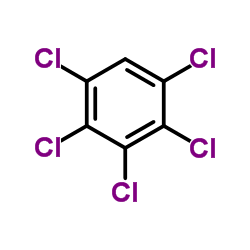Isolation and characterization of a biphenyl-utilizing psychrotrophic bacterium, Hydrogenophaga taeniospiralis IA3-A, that cometabolize dichlorobiphenyls and polychlorinated biphenyl congeners in Aroclor 1221.
Adewale J Lambo, Thakor R Patel
Index: J. Basic Microbiol. 46(2) , 94-107, (2006)
Full Text: HTML
Abstract
A psychrotrophic bacterium isolated from polychlorinated biphenyls (PCBs)-contaminated soil grew on biphenyl as sole carbon and energy source, and actively cometabolized PCBs at low temperature. Analysis of cellular fatty acids indicate that the bacterium is most closely related to Hydrogenophaga taeniospiralis. Resting cells incubated with 10 ppm of Aroclor 1221 at 5 or 30 degrees C for 48 h removed all mono-, most di-, and several trichlorobiphenyls. At 5 degrees C, removal of MCBs (monochlorobiphenyls) was between 63 to 89%, DCBs (dichlorobiphenyls) was between 30 to 78%, and TCBs (trichlorobiphenyls) was between 30 to 75%. At 30 degrees C, removal of MCBs was 100%, DCBs was between 30 to 100%, and TCBs was between 27 to 59%. Congeners with two or more ortho chlorine were generally resistant to degradation. However, removal of di-ortho plus para-substituted congeners at 30 degrees C and not at 5 degrees C, suggest that the presence of a para-chlorine enhanced the cometabolism of these congeners at 30 degrees C. Furthermore, after 72 h, resting cells removed 68 and 83% of 500 microM of 2,4'-dichlorobiphenyl (2,4'-DCB) and, 35 and 44% of 500 microM of 2,3-dichlorobiphenyl (2,3-DCB) at 5 and 30 degrees C, respectively. Analysis of metabolites by GC-MS indicates that the cometabolized 2,3-DCB was completely recovered as 2,3-chlorobenzoic acid (2,3-CBA), while the cometabolized 2,4'-DCB was not completely recovered as chlorobenzoic acid. To our knowledge, it is the first strain of Hydrogenophaga taeniospiralis found to degrade an organic pollutant, and also the first psychrotrophic strain of a member of the genus Hydrogenophaga to grow on biphenyl or cometabolize PCBs at low temperature. Results suggest that the bacterium has potential use in the bioremediation of PCB-contaminated sites in cold regions.2006 WILEY-VCH Verlag GmbH & Co. KGaA, Weinheim
Related Compounds
| Structure | Name/CAS No. | Molecular Formula | Articles |
|---|---|---|---|
 |
arochlor 1221
CAS:11104-28-2 |
C6HCl5 |
|
Effects of neonatal polychlorinated biphenyl exposure on fem...
2001-10-01 [Physiol. Behav. 74(3) , 363-70, (2001)] |
|
Differential effects of aroclors and DDT on growth factor ge...
1997-01-01 [Adv. Exp. Med. Biol. 407 , 295-302, (1997)] |
|
Characterization of multiple novel aerobic polychlorinated b...
2008-02-01 [Biodegradation 19(1) , 145-59, (2008)] |
|
Biodegradation of Aroclor 1221 type PCBs in sewage wastewate...
1981-11-01 [Bull. Environ. Contam. Toxicol. 27(5) , 695-703, (1981)] |
|
Endocrine disruptive effects of polychlorinated biphenyls on...
2005-08-01 [Tohoku J. Exp. Med. 206(4) , 327-32, (2005)] |